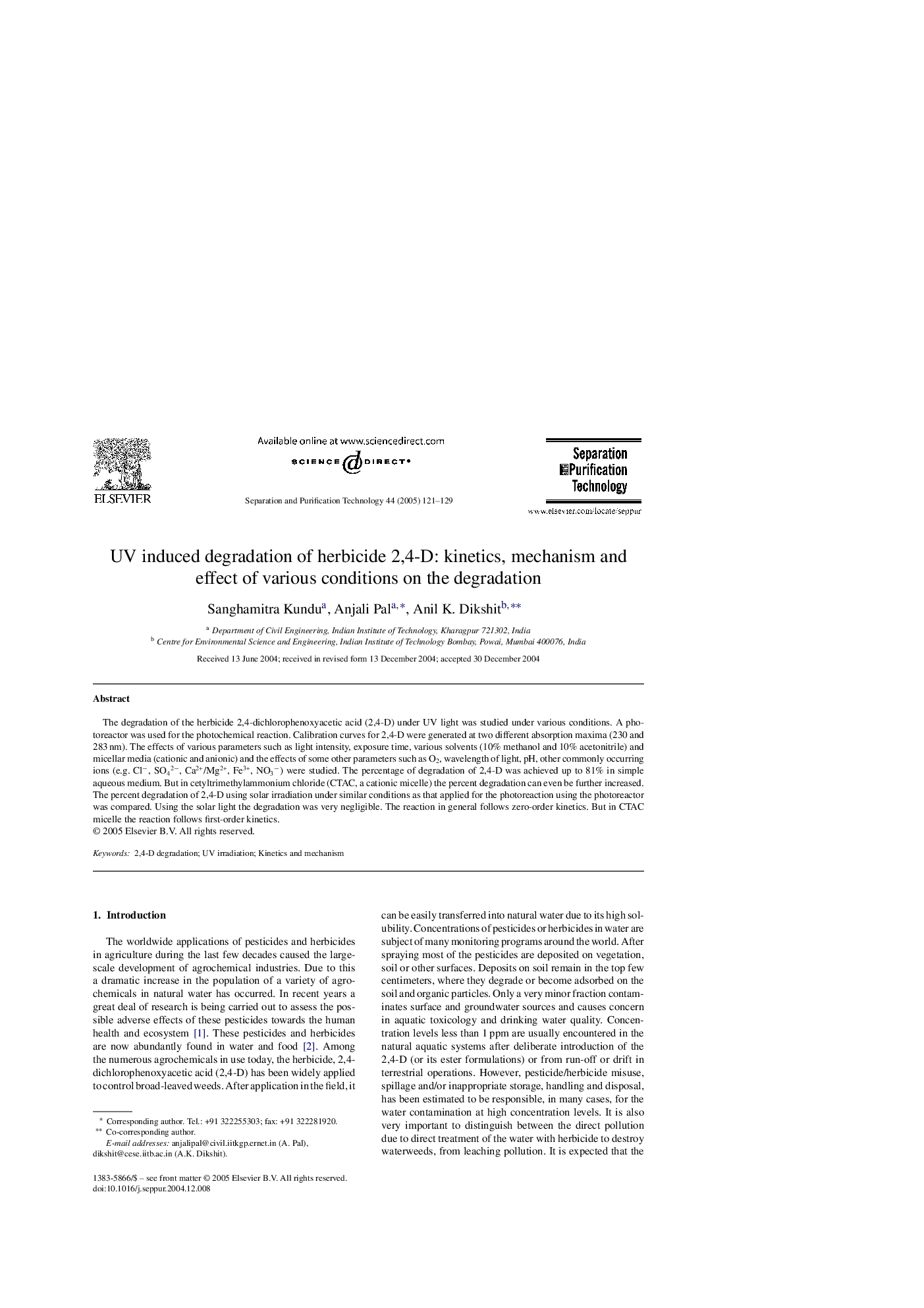| Article ID | Journal | Published Year | Pages | File Type |
|---|---|---|---|---|
| 10389855 | Separation and Purification Technology | 2005 | 9 Pages |
Abstract
The degradation of the herbicide 2,4-dichlorophenoxyacetic acid (2,4-D) under UV light was studied under various conditions. A photoreactor was used for the photochemical reaction. Calibration curves for 2,4-D were generated at two different absorption maxima (230 and 283Â nm). The effects of various parameters such as light intensity, exposure time, various solvents (10% methanol and 10% acetonitrile) and micellar media (cationic and anionic) and the effects of some other parameters such as O2, wavelength of light, pH, other commonly occurring ions (e.g. Clâ, SO42â, Ca2+/Mg2+, Fe3+, NO3â) were studied. The percentage of degradation of 2,4-D was achieved up to 81% in simple aqueous medium. But in cetyltrimethylammonium chloride (CTAC, a cationic micelle) the percent degradation can even be further increased. The percent degradation of 2,4-D using solar irradiation under similar conditions as that applied for the photoreaction using the photoreactor was compared. Using the solar light the degradation was very negligible. The reaction in general follows zero-order kinetics. But in CTAC micelle the reaction follows first-order kinetics.
Related Topics
Physical Sciences and Engineering
Chemical Engineering
Filtration and Separation
Authors
Sanghamitra Kundu, Anjali Pal, Anil K. Dikshit,
